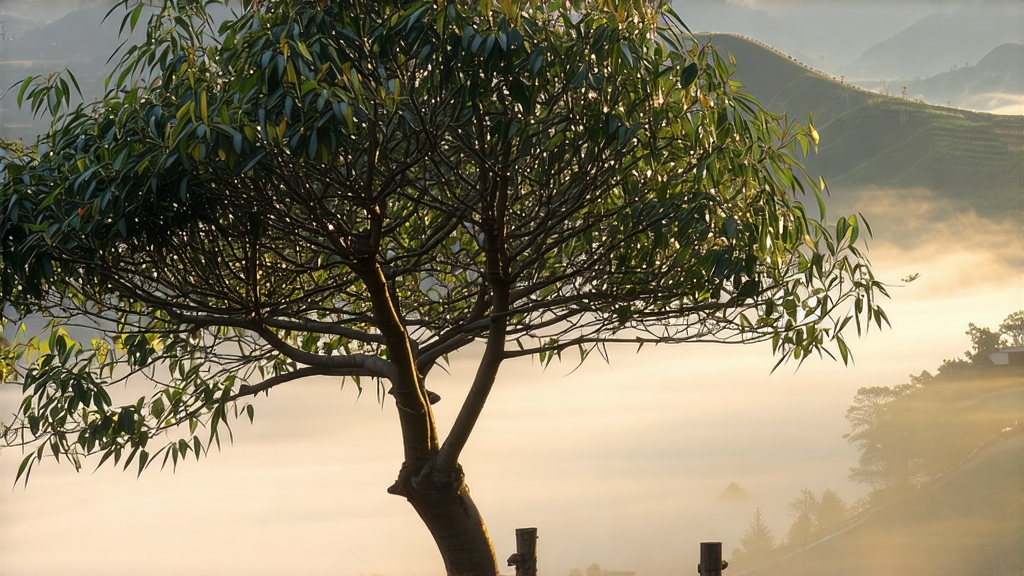
Tucked away in the granite folds of Guangdong’s Phoenix Mountain, Dancong—literally “single-bush” oolong—has been seducing tea drinkers since the Song dynasty court first sent tribute inspectors southward in 960 CE. Unlike the neatly trimmed hedges of modern tea gardens, Dancong trees stand free, often exceeding four meters in height, their gnarled trunks half-hidden by cloud forest. Each ancient plant is treated as a micro-terroir; locals claim that two neighboring bushes can produce liquors as different as Riesling from Syrah. This varietal individuality is the heartbeat of Dancong’s mystique.
Although botanists list them all under Camellia sinensis var. sinensis, growers recognize dozens of perfumed phenotypes, nicknamed according to the aroma they naturally mimic. The most celebrated include Huangzhi Xiang (gardenia), Milan Xiang (honey-orchid), Yulan Xiang (magnolia), and the elusive Jianghua Xiang (ginger flower). A single mountain village may harbor twenty such “aroma types,” each linked to a specific mother tree whose cuttings were grafted and re-grafted across centuries. The practice preserves genetic memory while allowing minute mutations to amplify fragrance.
Harvest begins at Qingming when morning mist still clings to the ravines. Only the middle three leaves are plucked, their edges already slightly curled from mountain chill. The goal is a leaf that is mature enough to carry aromatic oils yet tender enough to bruise. From here the craft turns into choreography: sun-withering on bamboo screens, shade-resting in reed baskets, and the critical “shaking-green” phase when leaves are tossed in tall rattan drums every thirty minutes for eight hours. Oxidation proceeds in pulses; edges redden while veins stay jade, creating the signature “green belly with red borders.” Once the floral note peaks—judged by sniffing the bruised leaf pile—firing on 180 °C charcoal interrupts the enzyme dance. The final low-temperature bake can last sixteen hours, during which the tea master feeds lychee wood embers every forty minutes, imprinting a whisper of smoked honey that will later bloom in the cup.
To unlock Dancong’s layered perfume, gongfu style is non-negotiable. A 120 ml zisha teapot or gaiwan is warmed with 95 °C water, then filled one-third with dry leaf. The first three-second rinse is discarded, yet already releases a burst of alpine flowers. Subsequent steeps start at five seconds, adding two each time. Liquor color shifts from pale chrysanthemum to deep amber by the fifth infusion, while aroma oscillates between peach skin and toasted almond. A well-aged Milan Xiang can endure twelve rounds before its honeyed orchid fades into sweet mineral water.
Tasting follows a three-breath rule: sip, hold on the tongue while inhaling gently, then exhale through the nose. The first breath delivers top notes—often citrus or blossom—carried by volatile esters. The second breath reveals the “mountain rhyme,” a cool stone minerality that Guangdong natives compare to the after-hum of a waterfall. The third breath tracks the “returning sweetness,” a delayed surge of sugarcane that arrives thirty seconds after swallowing. Experienced cuppers listen for a subtle clicking sound at the back of the throat, a sign of high-grade Dancong whose tannins have been tamed by charcoal.
Storage is the final, frequently overlooked chapter. Unlike pu-erh, Dancong prefers to live airtight, cool, and away from light. A double-lidded tin placed inside a clay jar mimics the stable microclimate of Phoenix caves. When revisited a year later, the tea often displays a smoother body, its once-flamboyant florals having mellowed into creamy custard, proof that oolong, too, can age gracefully if given silence and time.
For the global drinker seeking a bridge between the green freshness of Japanese sencha and the malt depth of Assam, Dancong offers a diagonal path across the flavor matrix. It is tea as perfume, tea as geology, tea as living history—one sip and the mountain reassembles itself inside your cup, cloud forest, charcoal smoke, and Song dynasty moonlight all stirred into an amber that refuses to sit still.